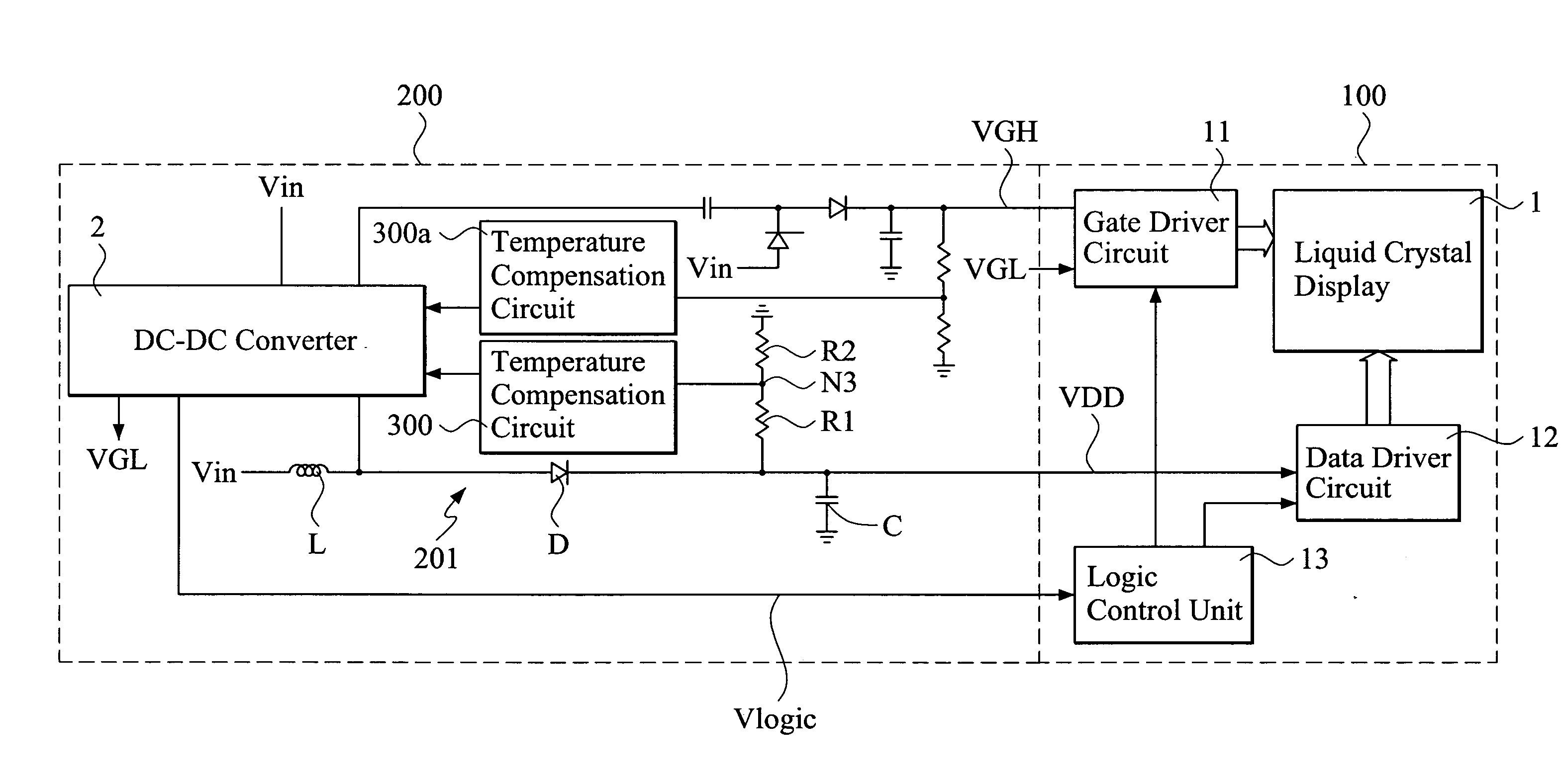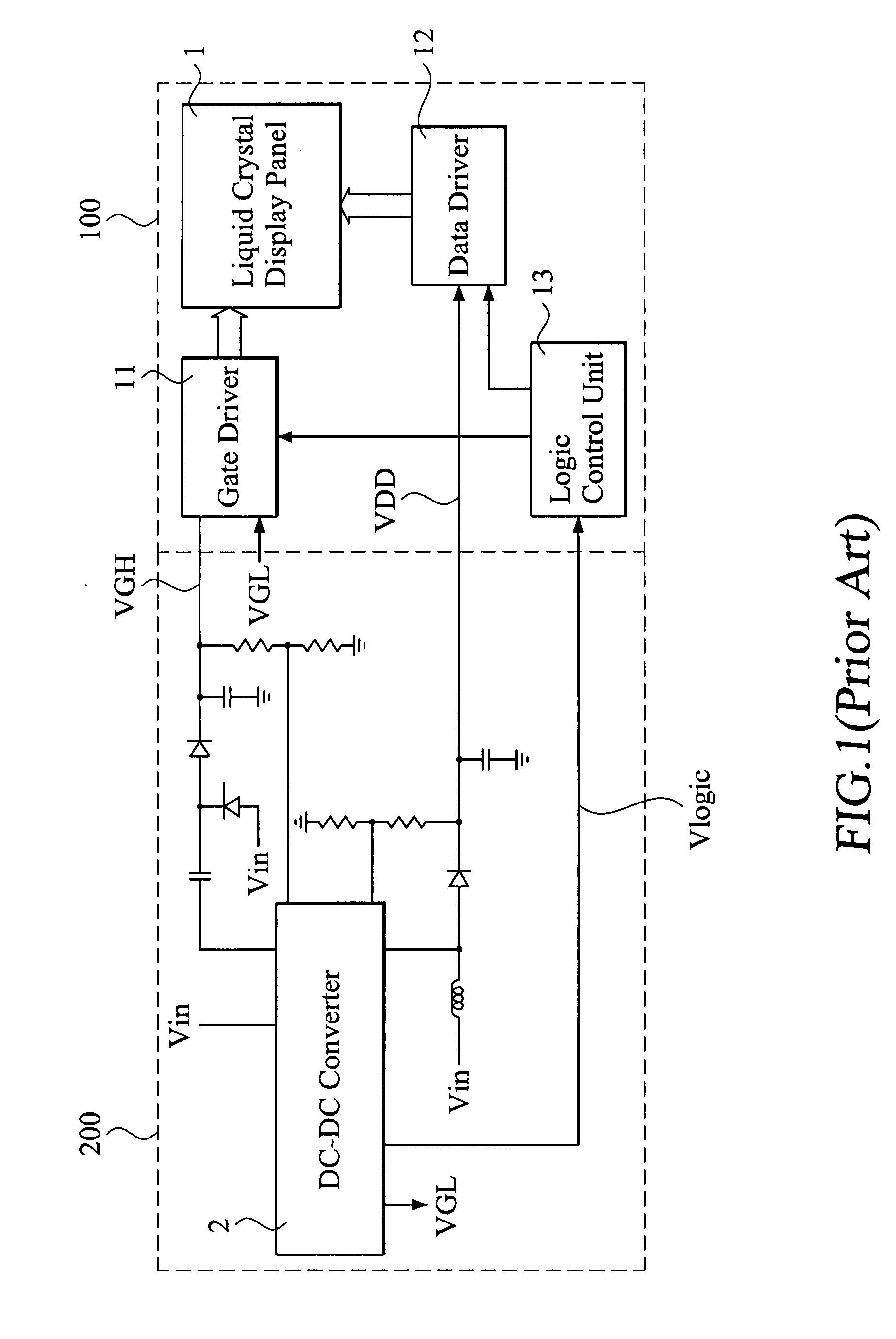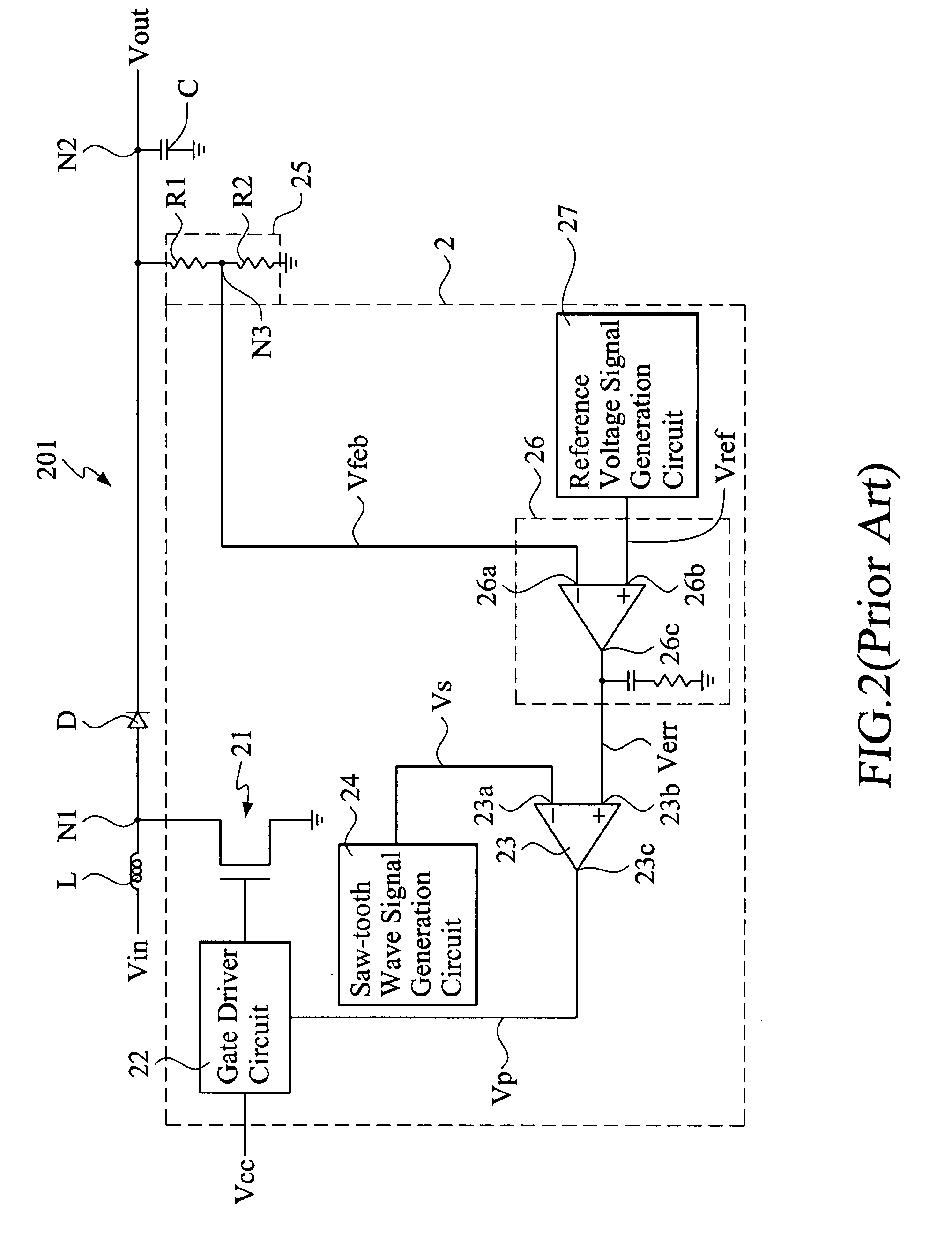DC-DC converter with temperature compensation circuit
a technology of temperature compensation and converter, which is applied in the direction of process control, television system, instruments, etc., can solve the problems of insufficient known circuit of the conventional dc-dc converter in view of the requirements for high precision, inability to effectively counteract the influence of the liquid crystal display panel, and inability to realize the temperature compensation operation of positive temperature coefficient or negative temperature coefficien
- Summary
- Abstract
- Description
- Claims
- Application Information
AI Technical Summary
Benefits of technology
Problems solved by technology
Method used
Image
Examples
Embodiment Construction
[0030]With reference to the drawings and in particular to FIG. 3, a circuit diagram of a DC-DC converter constructed in accordance with the present invention is shown. To simplify the description and to provide a cross reference and comparison between the DC-DC converter of the present invention and a conventional converter, parts / devices / elements used in the DC-DC converter of the present invention that are the same as those counterparts of the conventional converter will bear the same references as discussed previously in the BACKGROUND section. It is also noted that a DC-DC converter configured for providing a data driving voltage of a liquid crystal display is taken as an example for explanation of the present invention in the following description.
[0031]The DC-DC converter in accordance with the present invention, generally designated with reference numeral 2a, comprises a transistor based switching unit 21 having a drain terminal connected to a node N1 between an inductor elem...
PUM
 Login to View More
Login to View More Abstract
Description
Claims
Application Information
 Login to View More
Login to View More - R&D
- Intellectual Property
- Life Sciences
- Materials
- Tech Scout
- Unparalleled Data Quality
- Higher Quality Content
- 60% Fewer Hallucinations
Browse by: Latest US Patents, China's latest patents, Technical Efficacy Thesaurus, Application Domain, Technology Topic, Popular Technical Reports.
© 2025 PatSnap. All rights reserved.Legal|Privacy policy|Modern Slavery Act Transparency Statement|Sitemap|About US| Contact US: help@patsnap.com



